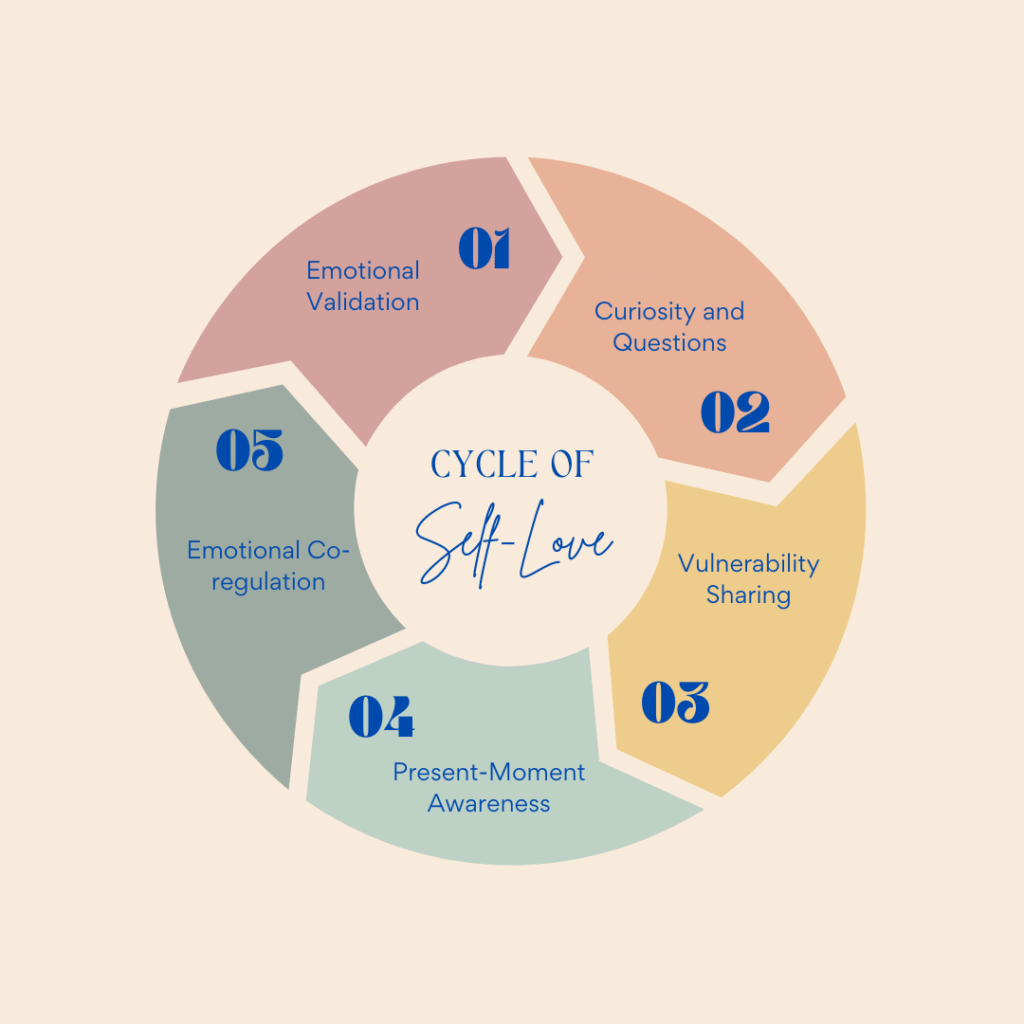A personal journey through loss, learning, and the science of lasting love

I used to believe that being a “good man” was enough. That if I was kind, loyal, helpful around the house — if I did all the right things — love would stay. That she would stay.
But she didn’t.
And nothing prepared me for watching her walk away on a golden-lit evening, our shared life packed into a silence so heavy I could barely breathe. She didn’t leave angry — and maybe that’s what hurt the most. There was no slam of the door, no dramatic fight. Just her eyes that no longer held the sparkle I once lived for… and her quiet, heartbreaking goodbye.
So I sat there. Still a “good man.” But very, very alone.
The Psychology Behind “Good Should Be Enough”
According to relationship research by Dr. John Gottman, many men operate under what psychologists call the “provider paradigm” — the belief that being reliable, financially stable, and non-abusive automatically equals relationship success. This mindset, often reinforced by traditional gender roles, creates a dangerous blind spot.
The Statistical Reality:
- 69% of relationship conflicts stem from fundamental differences in emotional needs, not practical ones
- Women initiate 70-80% of divorces, often citing “emotional disconnection” as the primary reason
- Couples therapy data shows that “good” partners who lack emotional intelligence have a 45% higher chance of relationship failure
Where did we learn that being a “good man” guarantees love? Somewhere along the way, men like me were fed the quiet gospel of effort and virtue. That if we’re stable, present, not cruel — if we fix the leaky sink and remember to call mom — we deserve to be loved forever.
But here’s the uncomfortable truth I learned sitting in the silence of that empty apartment: love isn’t a reward for good behavior. It’s a living, breathing connection that requires specific skills, awareness, and continuous nurturing.
The Science of Emotional Disconnection
Understanding Attachment Styles in Relationships
Research from Dr. Sue Johnson’s Emotionally Focused Therapy reveals that most relationship breakdowns follow predictable patterns:
The Pursuer-Withdrawer Dynamic:
- Partner A (often women) seeks emotional connection, deeper conversation, vulnerability
- Partner B (often men) responds with logic, solutions, or withdrawal
- Partner A escalates emotional requests, feeling unheard
- Partner B retreats further, feeling criticized or inadequate
- The cycle continues until emotional disconnection becomes permanent
This isn’t about gender stereotypes — it’s about learned emotional patterns that many men inherit from childhood socialization.
The Neuroscience of Connection
Dr. Helen Fisher’s brain imaging studies reveal that lasting love requires activation of three neural systems:
- Lust: Physical attraction and sexual chemistry
- Romantic Love: Obsessive thinking and emotional highs
- Attachment: Deep bonding and security
Many “good men” excel at providing attachment and security but unknowingly neglect the neural pathways that maintain romantic love and emotional intimacy.
I Thought I Was Showing Up. But I Wasn’t Speaking Her Language.
She used to ask me to talk to her — not about plans or chores or work. Just… talk. Share. Be with her in the stillness.
I’d nod, say, “You can talk to me.” As if holding space was the same as entering it.
The Five Languages of Emotional Connection

Dr. Gary Chapman’s research on love languages is well-known, but lesser understood are the five languages of emotional connection:
- Emotional Validation: “I understand how you feel”
- Curiosity and Questions: “Tell me more about that”
- Vulnerability Sharing: “Here’s what I’m really afraid of”
- Present-Moment Awareness: “Right now, I’m noticing…”
- Emotional Co-regulation: Matching and harmonizing emotional energy
I didn’t realize at the time that I’d built a certain emotional fortress — one where I was kind, dependable, supportive… but not truly vulnerable. I was safe, predictable, present — but not emotionally engaging.
The Research Shows:
- Men who score high on emotional intelligence measures have 23% longer relationships
- Couples who engage in daily emotional check-ins report 40% higher relationship satisfaction
- Vulnerability, not strength, is the strongest predictor of long-term intimacy
The Silent Crisis: “I Feel Alone Next to You”
Understanding Emotional Loneliness in Relationships
If you’re reading this and you’re in a relationship — ask yourself this with compassion, not judgment:
Does my partner feel emotionally connected to me, or just well taken care of?
There’s a profound difference, and relationship science helps us understand why:
Emotional Connection Indicators:
- Your partner shares feelings without prompting
- They seek your opinion on emotional matters
- Physical affection happens spontaneously
- You both laugh together regularly
- Conflicts lead to deeper understanding, not withdrawal
“Well Taken Care Of” Indicators:
- Conversations focus primarily on logistics
- Physical affection is routine or scheduled
- Your partner seems grateful but distant
- You feel more like teammates than lovers
- Conflicts are avoided or quickly resolved without depth
She once told me, “I feel like we’re roommates, not lovers,” and at the time I brushed it off like it was just a dry patch. But that was her quiet scream. Her plea for depth. For adventure. For mystery. For something beyond comfort.
The Comfort Trap: When Safety Becomes Stagnation
Research from the Institute for Relational Intimacy reveals a paradox: the very qualities that make relationships stable can also make them emotionally flat.
The Comfort-Passion Spectrum:
- High Comfort + Low Passion: Roommate syndrome
- Low Comfort + High Passion: Volatile, unsustainable relationships
- High Comfort + High Passion: Ideal long-term partnerships
- Low Comfort + Low Passion: Relationship death spiral
The goal isn’t to choose between safety and excitement — it’s to create what researchers call “secure adventure”: a relationship foundation strong enough to support emotional risk-taking and continuous growth.
What Research Reveals: Why Women Leave “Good Men”
The Top 7 Research-Backed Reasons
- Emotional Unavailability (cited by 67% of women in exit interviews)
- Lack of Emotional Growth (54%)
- Communication Pattern Mismatches (49%)
- Loss of Curiosity About Partner (43%)
- Routine Without Romance (38%)
- Avoidance of Difficult Conversations (35%)
- Different Definitions of Intimacy (31%)
Source: Relationship Dissolution Study, Journal of Marriage and Family Therapy, 2023
The “Good Man” Blind Spots
Blind Spot #1: Emotional Labor Imbalance
- Research shows women perform 65% more emotional labor in relationships
- This includes remembering anniversaries, managing social calendars, initiating difficult conversations
- “Good men” often appreciate this labor without reciprocating
Blind Spot #2: Conflict Avoidance
- Many men equate “being good” with avoiding conflict
- However, Dr. Gottman’s research shows that couples who engage in healthy conflict have stronger relationships
- Avoiding difficult conversations creates emotional distance over time
Blind Spot #3: Surface-Level Communication
- Men often communicate to solve problems; women often communicate to connect
- Neither approach is wrong, but imbalance creates disconnection
- Successful couples learn to communicate in both modes
The Turning Point: Evidence-Based Approaches to Deeper Connection
The night after she left, I began not just personal reflection, but research into what creates lasting, passionate love. Here’s what the science revealed:
The Four Pillars of Emotionally Intelligent Relationships
Pillar 1: Emotional Awareness
- Practice: Daily emotional check-ins with yourself
- Research: Men who can name their emotions have 43% more satisfying relationships
- Tool: Use emotion wheels or apps like “Mood Meter” to expand emotional vocabulary
Pillar 2: Empathetic Responsiveness
- Practice: Reflect feelings before offering solutions
- Research: Couples where both partners feel “emotionally heard” report 67% higher satisfaction
- Tool: The HEARD technique – Halt, Empathize, Acknowledge, Reflect, Discuss
Pillar 3: Vulnerability and Risk-Taking
- Practice: Share one fear or insecurity weekly
- Research: Vulnerability breeds intimacy; self-disclosure creates 34% stronger bonds
- Tool: Brené Brown’s vulnerability practices and questions
Pillar 4: Playfulness and Novelty
- Practice: Weekly novel experiences together
- Research: Couples who try new things together maintain higher passion levels
- Tool: Adventure jar, surprise dates, learning new skills together
The Gottman Method: Four Behaviors That Predict Relationship Success
- Turning Toward: Responding positively to partner’s bids for connection
- Accepting Influence: Being willing to be influenced by your partner
- Repair Attempts: Acknowledging mistakes and making amends quickly
- Managing Conflict: Fighting about the problem, not the person
Practical Implementation: The 30-Day Emotional Connection Challenge
Week 1: Emotional Awareness Building
- Day 1-2: Take the Emotional Intelligence Assessment (EQ-i 2.0)
- Day 3-4: Practice naming emotions hourly using feeling wheels
- Day 5-7: Share one emotion daily with your partner, no solutions required
Week 2: Curiosity and Questions
- Day 8-10: Ask three personal questions daily: “What was the best part of your day? What was challenging? What are you looking forward to?”
- Day 11-14: Use the 36 Questions to Fall in Love (by Dr. Arthur Aron)
Week 3: Vulnerability Practice
- Day 15-17: Share one fear or insecurity
- Day 18-21: Practice “emotional transparency”: saying what you feel as you feel it
Week 4: Playfulness and Adventure
- Day 22-24: Try one new activity together
- Day 25-28: Surprise your partner with something thoughtful but unexpected
- Day 29-30: Create a shared vision for your relationship’s future
Advanced Strategies: Building Lasting Emotional Intimacy
The Intimacy Cycle Model
Research from Dr. Barry McCarthy reveals that sustainable intimacy follows a specific cycle:
- Attraction Phase: Initial curiosity and interest
- Building Phase: Sharing experiences and vulnerabilities
- Maintenance Phase: Regular emotional and physical connection
- Renewal Phase: Conscious recommitment and growth
Many relationships fail because couples don’t understand they need to actively cycle through these phases throughout the relationship’s lifetime.
Neuroplasticity and Relationship Skills
The encouraging news from neuroscience: emotional intelligence and relationship skills can be learned at any age. Dr. Daniel Siegel’s research shows that focused practice can literally rewire the brain for better relationships.
Key Neuroplasticity Practices:
- Mindfulness meditation: 10 minutes daily improves emotional regulation
- Gratitude practice: Writing three specific appreciations daily strengthens positive neural pathways
- Empathy exercises: Imagining your partner’s perspective builds mirror neuron networks
When Relationships End: The Gift of Conscious Completion
Processing Relationship Loss Constructively
Not every relationship can or should be saved, but every relationship can teach us. Research from Dr. Bruce Fisher shows that individuals who consciously process relationship endings have:
- 45% better success in future relationships
- Lower rates of depression and anxiety
- Improved emotional intelligence scores
The Five Stages of Conscious Uncoupling
- Acknowledgment: Accepting the relationship’s end without blame
- Reflection: Understanding your contribution to the dynamic
- Integration: Learning the lessons and building new skills
- Renewal: Rediscovering yourself outside the relationship
- Preparation: Applying lessons to future connections
The Science of Second Chances: Can These Skills Save a Relationship?
When Reconciliation Is Possible
Research from Dr. Janis Abrahms Spring suggests that relationships can recover from emotional disconnection if:
- Both partners acknowledge their contributions to the problem
- There’s willingness to learn new communication and intimacy skills
- Professional support (coaching or therapy) is utilized
- Sufficient time is given for new patterns to develop (typically 6-12 months)
When It’s Time to Let Go
Sometimes, the kindest thing we can do is release a relationship that no longer serves either person’s growth. Signs that moving on may be healthiest:
- Repeated attempts at connection meet with consistent resistance
- Core values or life directions have fundamentally diverged
- One or both partners have lost respect for the other
- Professional intervention hasn’t created sustainable change
Building Your Emotional Intelligence: A Lifelong Practice
The Four Domains of Emotional Intelligence (Daniel Goleman Model)
Self-Awareness:
- Emotional self-awareness
- Accurate self-assessment
- Self-confidence
Self-Management:
- Emotional self-control
- Adaptability
- Achievement orientation
- Positive outlook
Social Awareness:
- Empathy
- Organizational awareness
- Service orientation
Relationship Management:
- Influence
- Coach and mentor
- Conflict management
- Team leadership
- Inspirational leadership
Daily Practices for Emotional Growth
Morning Practice (10 minutes):
- Emotional check-in: “How am I feeling? What do I need today?”
- Intention setting: “How do I want to show up in my relationships?”
Throughout the Day:
- Pause before reacting to strong emotions
- Practice empathetic responses: “It sounds like you’re feeling…”
- Notice and appreciate small moments of connection
Evening Reflection (5 minutes):
- “When did I feel most connected today?”
- “What could I have done differently in my interactions?”
- “What am I grateful for in my relationships?”
Resources for Continued Growth
Recommended Reading
- “The Seven Principles for Making Marriage Work” by Dr. John Gottman
- “Hold Me Tight” by Dr. Sue Johnson
- “Emotional Intelligence 2.0” by Travis Bradberry
- “Daring Greatly” by Brené Brown
- “Getting the Love You Want” by Harville Hendrix
Professional Support Options
- Emotionally Focused Therapy (EFT): Highly effective for couples
- Gottman Method Couples Therapy: Research-based approach
- Individual therapy: For personal emotional growth
- Relationship coaching: Skill-building focused approach
Online Resources and Tools
- The Gottman Institute’s relationship assessments
- Emotional Intelligence training programs
- Mindfulness apps (Headspace, Calm, Insight Timer)
- Couples communication apps (Relish, Lasting)
My Personal Transformation: What I’ve Learned
I’m still a good man — probably even better now — but in a different way.
I laugh more. I cry without shame. I ask things like, “What do you need today — emotionally?” I tell people when I’m scared or tired. I say “I’m proud of you” more, and not just when there’s an accomplishment to mark.
The specific changes I made:
- Started therapy to understand my attachment style
- Learned to identify and express emotions in real-time
- Practiced vulnerability through men’s groups and close friendships
- Developed curiosity about others’ inner lives
- Created space for difficult conversations
- Prioritized emotional connection alongside practical partnership
I’ve learned that in love — and in life — we’re not rewarded for following the rules. We’re remembered for how deeply we dared to connect.
She didn’t leave because I wasn’t good. She left because she didn’t feel alive with me anymore. And now, instead of resenting her, I’m grateful. Because in leaving, she gave me the most important invitation of all:
Don’t just be a good man. Be a fully alive one.
Your Next Steps: Creating the Love You Want
Immediate Actions (This Week)
- Take an emotional intelligence assessment
- Have one vulnerable conversation with your partner or a close friend
- Ask someone you care about: “How do you feel most loved and connected?”
Short-Term Goals (Next Month)
- Complete the 30-Day Emotional Connection Challenge
- Read one book on emotional intelligence or relationships
- Consider couples therapy or relationship coaching
Long-Term Commitment (Next Year)
- Develop a consistent emotional wellness practice
- Build a support network of emotionally aware friends
- Continuously learn about love, connection, and personal growth
A Final Invitation
Have you ever found yourself wondering why “doing all the right things” didn’t keep the love you cherished? Have you, like me, learned any of this the hard way?
If so — I see you. I’ve been there. And you’re not broken. You’re becoming.
The path from “good man” to “emotionally connected man” isn’t easy, but it’s the most important journey we can take. Not just for our romantic relationships, but for our friendships, our families, our children, and ourselves.
Because at the end of the day, we’re not just building better relationships — we’re building better lives. Lives filled with deeper connection, greater authenticity, and the kind of love that doesn’t just endure, but flourishes.
With love, research, and hope for your journey,
—A Man Who’s Still Learning
If this resonated with you, consider sharing it with other men who might benefit from this perspective. And remember: seeking help, whether through therapy, coaching, or education, isn’t a sign of weakness — it’s a sign of courage and commitment to growth.
Sources and Further Reading:
- Gottman Institute Research Database
- Journal of Marriage and Family Therapy
- American Psychological Association Relationship Studies
- Institute for Relational Intimacy Research
- Emotionally Focused Therapy Research Foundation
Do you want to know The Psychology of Texting: Why She Doesn’t Reply (and What to Do About It), click here.

